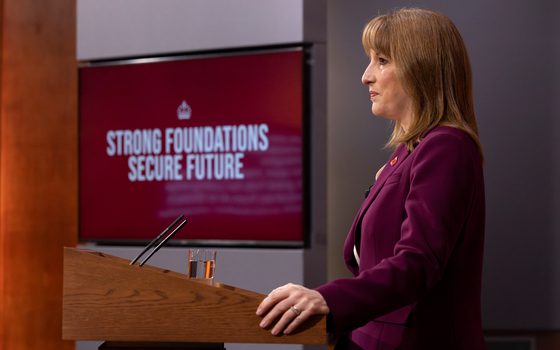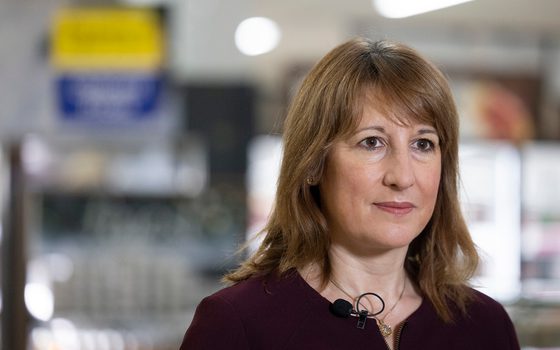Outside Europe it’s normal to protect basic energy needs — so why don’t we?
The majority of the world's population uses tariffs which guarantee cheap essential energy. Time for the UK to pay attention.
22 August 2024
With the summer drawing to a close, and winter on the way, our energy bills will soon be on the rise. Tomorrow, Ofgem is expected to announce that the energy price cap will increase to £1,717. Once again households will have to cut back and hundreds of thousands will be faced with impossible decisions between heating or eating. But it doesn’t have to be like this. Across most of the world, minimum or essential levels of energy use are protected by pricing mechanisms – so why not here in the UK?
Energy and heat are one of the basic building blocks of a decent standard of living. Other services, like healthcare, are provided free at the point of use, but energy is commercialised. The result is that even outside of crisis times, fuel poverty is widespread across Europe, with millions of households unable to afford to meet their basic needs. In the UK, the problem is compounded by our leaky, dilapidated housing stock.
As the new government reviews the options for reforming the energy billing system, it should learn from the past few years. When Russia’s invasion of Ukraine spiked energy prices, Europe’s vulnerabilities were exposed. European governments responded with emergency mechanisms to limit the impact of the price shock on households. But their approaches diverged into two camps.
On one side, the UK government put a unit price cap on all consumption – the energy price guarantee. The approach was straightforward, but it was expensive (an estimated £20bn in total) and extremely inefficient. This approach meant that all consumption was subsidised, regardless of whether it was for the essentials (eg powering the fridge) or for luxuries (eg heating the jacuzzi). Capping all prices reduced the incentive for households to save energy and install energy-efficiency measures like insulation.
On the other side, countries such as Austria, Greece, Poland, the Netherlands, and Hungary applied large discounts, but only to an initial fixed block of energy. For example, Austria’s discount applied only to the first 2,900 kWh of electricity consumption. This meant that essential household consumption was protected, but consumption above the limit was exposed to the market price. This maintained the increased incentive to cut consumption and install efficiency measures. Importantly, this approach also meant that governments spent far less money subsidising the luxury energy consumption of well-off households, who generally consume the most energy. This model, where prices rise as consumption increases, is known as a “rising block tariff”. This underpins NEF’s National Energy Guarantee policy.
Outside Europe this model isn’t just a temporary crisis response: it’s the norm. With countries like India, China, Indonesia, and Bangladesh using the model, the majority of the world’s population is covered by a rising block tariff. Some, like Pakistan and Egypt, apply bottom tariffs at extremely low levels, equivalent to less than 1p per kWh for a minimum level of consumption. This means the amount of energy needed to run a fridge and keep a mobile phone charged is almost cost-free.
It’s not just middle and lower-income countries applying this model. Nations like Japan and South Korea have used it for decades (see table below). In Japan, the gap between the cheap bottom tariff on initial consumption and the higher tariff on higher consumption is relatively gentle, increasing by just 36%. In South Korea, the increase from bottom to top is 167%. This means South Korean households get a very cheap price on around two-thirds of their typical consumption, but there are sharp penalties for very high consumption.
Table: Electricity pricing in Japan and Korea in 2024
Japan |
||||
Consumption block (monthly) |
<120 kWh |
121 – 300 kWh |
301+ kWh |
Increase top/bottom |
Price (yen) |
29.8 |
36.4 |
40.5 |
36% |
Republic of Korea (non-summer tariffs) |
||||
Consumption block (monthly) |
<200kWh |
201 – 400 kWh |
401+ kWh |
Increase top/bottom |
Price (won) |
112 |
207 |
299 |
167% |
Source: TEPCO (Japan), KEPCO (Republic of Korea)
There are merits to both the Japanese and South Korean approaches, but if we were looking to implement such a tariff system in the UK, we’d need to start with a gentle increase, to give households time to adapt, and invest in energy efficiency. In an ideal world, we’d see a pain-free implementation, with a cheaper lower tariff created alongside no changes at the top.
Sound utopian? It might not be. The new government has a not-so-secret weapon at its disposal. Recent decisions to unlock onshore wind and solar projects will see an influx of much cheaper energy into the grid. If we continue with business-as-usual, this energy will disappear into the mix, consumed primarily by businesses and high-income households. Instead, we could syphon it off, directing it towards creation of the cheapest tariff in a National Energy Guarantee. The delivery of this cheaper tariff could be supported by the newly created public generator, Great British Energy.
At NEF we’re calling on this government to learn from the world outside Europe and implement a National Energy Guarantee. This is only way to guarantee that no household can fall into energy poverty, while incentivising households to reduce their domestic emissions. And if it’s linked to the growing availability of cheap renewable electricity, the bottom, cheap or free tariff of the National Energy Guarantee can form the first “green dividend” delivered to households by the renewable energy transition.
For more about the rising block tariff model and its use around the world, NEF produced this factsheet for Heinrich Böll Stiftung
Image: iStock






